#edward i of england
Photo


Isabel of Castile and Edward IV of England
In February 1464, when Isabel was not quite thirteen years old, her brother
Enrique IV of Castile accepted the English offer and agreed to give her in marriage to King Edward IV, in a gesture of political alignment between the two countries. This would at once make Isabel a queen. It might have been a generous act on Enrique’s part, to help ensure an illustrious future for his half sister. However, it is just as likely that the marital alliance was Enrique’s attempt to remove Isabel from the direct line of succession in Castile and relocate her to a distant land, particularly at a time when rumors were brewing about Princess Juana’s legitimacy. Regardless of Enrique’s motives, however, the proposition of marriage to the English king would have been appealing to most young women. The twenty two-year-old Edward of York had recently assumed the throne of England. Charming, blond, strong, and six feet four inches tall, he was intelligent, excellent at the courtly games of hunting and jousting, dressed elegantly in furs and rich jewelry, and was fond of chivalric romances. This combination of traits made him irresistible to women, upon whom the lusty young king was eager to lavish his own attentions.

Marriage to Edward would of course have been an intriguing, even dazzling, prospect for Isabel, who loved hunting and stories of courtly love. It would give her a splendid husband, make her the envy of other women, and install her as queen of a kingdom with which she had long ancestral links. Isabel believed that Spain and England had a natural dynastic affinity. Her grandmother was Catherine of Lancaster, the daughter of the famous English nobleman John of Gaunt, son of King Edward III, whose marriage to Constance of Castile had made him a contender for the throne of Castile.
Edward IV was also descended from John of Gaunt, making him a distant cousin of Isabel. If the alliance proceeded, an old family tie would be reconnected. The marriage presented some strategic opportunities for England as well. Edward’s descent from King Pedro of Castile, through Pedro’s daughter Isabel Duchess of York, already made Edward a potential claimant to the Castilian throne, and this claim would be strengthened if he were to marry Isabel. English poets were already writing doggerel extolling Edward as not just king of England and deserving of France but also the future inheritor of Spain: “Re Angliae et Franciae, I say, It is thine own, why sayest thou nay? And so is Spain, that fair country.”

Once the match was proposed, Isabel waited at home for the decision. Given the difficulties in communication at the time, messages from one court to another sometimes took months because courtiers needed to physically travel from one place to another. Finally she somehow learned, to her great disappointment, that another woman had been selected, in a most unusual way. Unbeknown to the king’s councilors, who were negotiating Edward’s marriage prospects in both France and Spain, King Edward had already impulsively married a comely widow, Elizabeth Woodville. In faraway Castile, Isabel, still a young teenager, brooded over her rejection, much later telling ambassadors that she had been passed over for a mere “widow of England,” making it clear she had harbored resentment at her rejection for the next twenty years. Like Elizabeth Woodville, she was not a woman to suffer a slight lightly or forgive easily.

Source:
Kirstin Downey, Isabella: The Warrior Queen
#Isabel de Castilla#Isabella of Castile#Edward I of England#Henry IV of Castile#Enrique IV de Castilla#Elzabeth Woodville#Isabel tve#The White Queen#Spanish history#English history
35 notes
·
View notes
Text

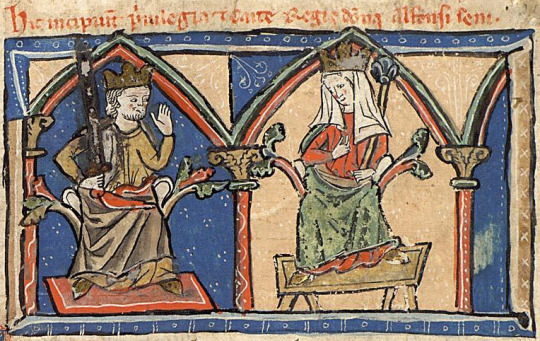




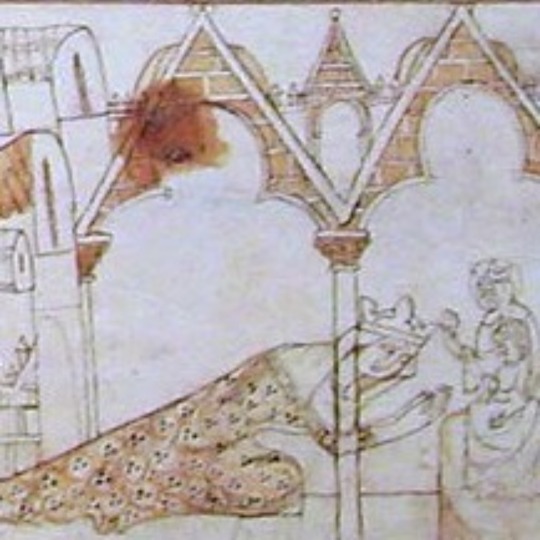

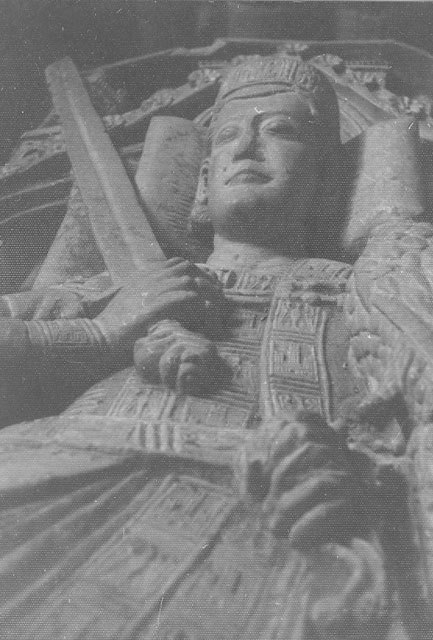

The Bastard Kings and their families
This is series of posts are complementary to this historical parallels post from the JON SNOW FORTNIGHT EVENT, and it's purpouse to discover the lives of medieval bastard kings, and the following posts are meant to collect portraits of those kings and their close relatives.
In many cases it's difficult to find contemporary art of their period, so some of the portrayals are subsequent.
1) Ferdinand III of Castile (1199/1201 – 1252), son of Alfonso IX of Leon and his wife Berenguela I of Castile
2) Alfonso IX of Leon (1171 – 1230), son of Ferdinand II of Leon and his wife Urraca of Portugal; with Berenguela I of Castile (1179/ 1180 – 1246), daughter of Alfonso VIII of Castile and his wife Eleanor of England
3) Blanche of Castile (1188 – 1252), daughter of Alfonso VIII of Castile and his wife Eleanor of England
4) Henry I of Castile (1204– 6 June 1217), son of Alfonso VIII of Castile and his wife Eleanor of England
5) Urraca of Castile (1186/ 1187 – 1220), daughter of Alfonso VIII of Castile and his wife Eleanor of England
6) Ferdinand of Leon (ca. 1192 – 1214), son of Alfonso IX of Leon and his wife Theresa of Portugal
7) Elisabeth of Swabia (1205 – 1235), daughter of Philip of Swabia and Irene Angelina
8) Alfonso X of Castile (1221 – 1284), son of Ferdinand III of Castile and his wife Elisabeth of Swabia
9) Philip of Castile (1231- 1274), son of Ferdinand III of Castile and his wife Elisabeth of Swabia
10) Eleanor of Castile (1241- 1290) daughter of Ferdinand III of Castile and his wife Joan of Ponthieu: with Edward I of England ( 1239 – 1307), son of Henry III of England and his wife Eleanor of Provence
Note: The marriage of Alfonso IX's parents got also annulled/declared void due to consanguinity, but I didn't include him on the list because this example is already present in Ferdinand III & IV
#jonsnowfortnightevent2023#canonjonsnow#asoiaf#a song of ice and fire#day 10#echoes of the past#historical parallels#medival bastard kings#bastard kings and their families#ferdinand iii of castile#alfonso ix of leon#berenguela i of castile#blanche of castile#henry i of castile#ferdinand of leon#urraca of castile#alfonso x of castile#philip of castile#eleanor of castile#edward i of england
4 notes
·
View notes
Text

it's been a While since i've drawn any medieval folks, but for some reason i decided to draw edward i
#i don't even like him (i'm scottish 🏴🏴🏴)#historical fanart#doodle's art#doodle's history guys#my art#art#edward i#edward i of england#british monarchy
2 notes
·
View notes
Photo

“I feel there are more villains in the English Royal Family: Prince John, Edward I, Henry VIII, Mary I, Edward VIII, Prince Andrew etc. than there are heroes.” - Submitted by Anonymous
17 notes
·
View notes
Text
“Tribute from Edward I to Philippe the Bel (….The scene takes place in a hall of the royal palace in the presence of the court. )”. Chronicles of Saint Denis or Grand Chronicles of France. Edition date: 1401-1500 French manuscript illuminated on parchment.” Credits to Martine de la Chatre.

#Edward I#Edward I of England#king Edward of England#Edward long shanks#hammer of scots#Plantagenet dynasty#Philippe iv#Philippe iv de France#Philippe le bel#Maison de Capet#Capet dynasty#capetien dinastie#middle ages#manuscripts#illuminates#13th century#medieval
4 notes
·
View notes
Text
“Edward I was a great Arthurian enthusiast. Unlike previous kings, he owned several texts such as Roman le Brut, Tristan, and Historia Regum Britanniae. In 1278, he and his wife visited Glastonbury to see the alleged tomb of Arthur and to pay respects. Another of the king’s pastime activities, jousting, was also tied to Arthurian lore. He organized several roundtable reenactments to celebrate birthdays and victories in war (in 1279 and 1284).”
[from this article]
edward i was so real fr
0 notes
Text
My Hundred Years War Causes Series
The Hundred Years War did not just begin as a dynastic dispute which left the throne of France having multiple claimants with the death of Charles IV of France, the last male of the mainline of the Capet dynasties, in 1328.
The Hundred Years War did not just begin as a dynastic dispute which left the throne of France having multiple claimants with the death of Charles IV of France, the last male of the mainline of the Capet dynasties, in 1328.
The driving forces behind this conflict were geopolitical, historical, and dynastic disputes over the succession and the expansion of Capet’s dynastic power in France during…

View On WordPress
#100 years war#Edward I of England#Edward III of England#History#Philip II of France#Scottish History
0 notes
Text

Something I had done years ago on A4 size paper. I think I skipped a few due to lack of space. Kings and Queens of England (after king Henry IV)
#kings of england#artists on tumblr#drawing#traditional art#traditional drawing#Richard III#Henry VII#Henry VIII#Mary I#Elizabeth I#Charles I#Charles II#George III#George IV#Queen Victoria#George v#George VI#Edward VII#queen elizabeth ii#history art
695 notes
·
View notes
Text





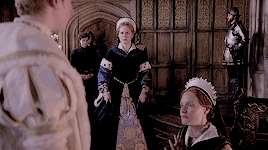
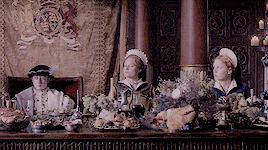

The world wants us at odds. We don't have to let it be that way.
148 notes
·
View notes
Text
Uhhhmmmm pirates reblog if you agree
#im sleep deprived#uh oh#i think i have an exam tomorrow#but i don't even know#pirates are cool#btw#edward england#he was very cool and interesting#more research has yet to be done#history#pirates#pirates of the caribbean#potc
80 notes
·
View notes
Photo

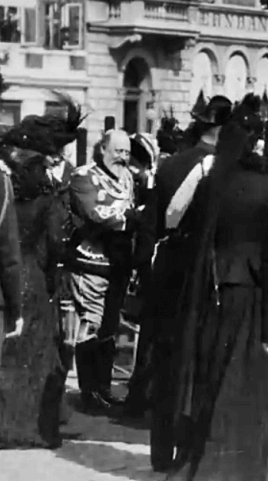
Empress Alexandra Feodorovna greets her uncle King Edward VII in Denmark, September 1901.
#historyedit#royaltyedit#empress alexandra feodorovna#king edward vii#romanov#russia#gif#england#look how happy bertie is!#when you realise you can all identify them#even though their backs are turned...#*mariah carey - obsessed* starts playing#i saw her waist#her chignon#and i was like#alix!
422 notes
·
View notes
Text
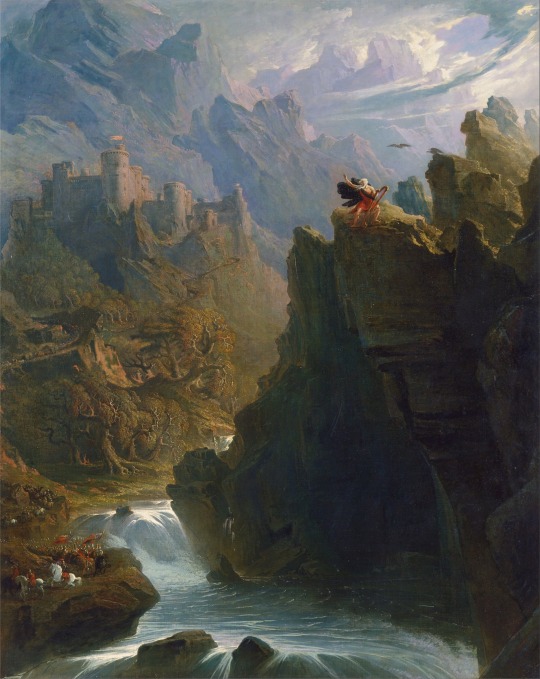
The Bard by John Martin
#the bard#john martin#art#romantic#landscape#poem#thomas gray#romanticism#harp#druids#edward i#conquest#wales#britain#england#medieval#middle ages#knights#army#mountains#snowdonia#celtic#welsh#bard#plantagenet#castle#waterfalls#river#conwy#harlech
452 notes
·
View notes
Text
I’m starting to suspect that GRRM named Alicent Hightower after Alice Perrers, especially if he’s acting on the infamous legend of Edward III’s relationship with her (and Alice generally). It’s obvious, after all, that GRRM took a heavy dose of inspiration for Jaehaerys I from Edward III (albeit less a strictly historical sense of Edward III and more a combination of the general popular idea of him plus that favorite historical fiction grab-bag for GRRM, The Accursed Kings). Like Edward III, Jaehaerys came to the throne as a 14-year-old boy and reigned into his 60s; like Edward III, Jaehaerys succeeded a weak and incapable father to be remembered as a strong and successful king; like Edward III, Jaehaerys was married for over four decades to the (very specifically not beautiful) princess he had wed as a teenager, whom he (supposedly) loved deeply and who represented the beau ideal of medieval/Targaryen queenship; like Edward III, Jaehaerys had a large family but at the end of his life was succeeded not by his much-loved eldest son and heir (nor even his likewise beloved second son), but his most senior grandson. (And this is all without talking about the very obvious comparisons to be made between the Alyssa Velaryon-Rogar Baratheon relationship and regency and that of Queen Isabella and the almost identically named Roger Mortimer.)
So it may have been only natural that GRRM would extend the parallel by naming Alicent after Alice Perrers, who became the mistress of Edward III at some point in the mid 1360s. Would it surprise anyone if GRRM believed, as has been long assumed, that Alice was a young teenager when she became a member of the royal household and the lover of the elder king - perhaps, indeed, the same age as the 15-year-old Alicent was when, having entered the royal household as the daughter of the Hand, she was reading to the elderly and dying Jaehaerys I? Would it surprise anyone if GRRM thought of Alice - widely (if not totally accurately) remembered as grasping and ambitious, manipulating a supposedly feeble and senile king into dumping lands, treasurers, and gold almost literally into her lap - in creating Alicent - a girl whose father (who certainly did not lack for ambition) would later be accused of bringing her to court expressly to win over the future King Viserys I, and who herself would be rumored to have had a sexual relationship with the both aged Jaehaerys as well as the then-married Viserys (perhaps echoing how Alice’s relationship with Edward began while Philippa was still alive)? If Alice is far from a perfect parallel to Alicent (and there are definitely significant differences between the two), I can nevertheless believe GRRM liked the idea of borrowing some surface-level elements of Alice - including, most basically, a version of her name - to use for Alicent Hightower.
#asoiaf meta#alicent hightower#jaehaerys i targaryen#historical parallels#real world inspiration#alice perrers#Edward iii of England
72 notes
·
View notes
Photo
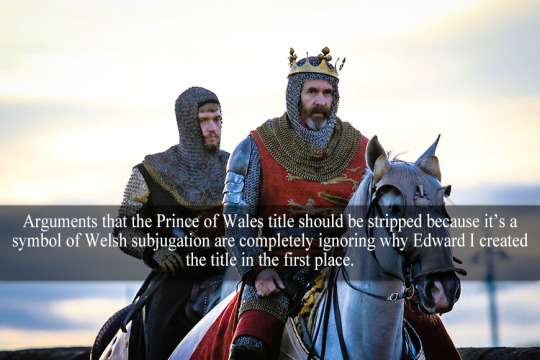
“Arguments that the Prince of Wales title should be stripped because it’s a symbol of Welsh subjugation are completely ignoring why Edward I created the title in the first place.” - Submitted by Anonymous
16 notes
·
View notes
Text
Wouldn't it just be delicious if in season 2 the show went out of its way to confirm Ed's literacy, like showing him casually doing captain things like looking at ship manifests or checking ledgers or whatever? I think that could be hilarious.
I'm already an Ed Can Read truther because beyond the likelihood that a captain would need to be able to read maps and charts and the like, the set for his cabin on his original ship included scrolls, and at the party we see him look at the dinner place card while sitting in the right place.
Also historically, it really wasn't that uncommon to be able to read but not write! So him signing with an X doesn't disprove that to me. It would be even funnier if later on we learned that he knew how to write properly too, or even had a lovely running hand that rivaled Lucius? I would just eat that up with a spoon.
#i cannot stress this enough#I mostly want this because it would be funny#like 99% of my desire for this is because it would be funny#anyway#literacy is a spectrum#something modern people forget because so many of us learn to read and write not that far apart#and do so fairly early in our lives#to say nothing of protestant attitudes towards literacy and how aggressively protestant England was#iirc the literacy rate in the colonies could be much higher at times because Puritans#which of course means more north america than anything#but idk#I'm willing to wait for the show to prove me wrong#edward teach is literate#only David Jenkins can judge me#I know people think it would be cute if we got a whole#stede teaches ed to read thing#but idk those plots in fics kinds gross me out#plus I think a show as obsessed with the stuff this one is wouldn't do that#ofmd#our flag means death#ofmd meta#edward teach
79 notes
·
View notes
Text
"In the early 1360s Edward III took as his mistress Alice Perrers, the daughter of a London goldsmith and widow of one of the King’s jewellers, Janyn Perrers. Alice’s opponents would later viciously exaggerate her low birth—Thomas Walsingham claimed that her father was a thatcher—so it has only been in this century that her true identity was revealed by Mark Ormrod and Laura Tompkins. Alice became one of Philippa’s demoiselles, but supplemented her income from Philippa with a role as a moneylender to merchants and gentry. During Philippa’s lifetime she began investing her wealth in property that, Tompkins has estimated, would eventually approach £2000 per annum in value—an income that exceeded that of some earls.
Alice bore the King a son, John Southeray, in about 1365 and from 1367 she received a number of royal grants. Her name is notably absent from the list of Philippa’s ladies who received bequests in the Queen’s will. Philippa died in 1369 and, unlike other widowed kings of the later Middle Ages, Edward III seems to have made no attempt to look for a replacement queen. Alice then emerged as a public figure, richly rewarded by the King, and sought out by courtiers for her influence over him. In 1373 Edward gave her a collection of the queen’s jewels and the following year the Pope himself included her among those he petitioned to influence Edward III to engineer his brother’s freedom from captivity. Alice subsequently stole the show at a royal tournament at Smithfeld when she dressed as “the Lady of the Sun.” Her choice of outft was probably a deliberate spin on Edward III’s own sunburst emblem.
Alice was indubitably a skilled businesswoman with an impressive grasp of property law, but she was also abusing her closeness to the King in order to build up her wealth. Moreover, contemporaries identifed her as the heart of a disruptive and malign court clique. Tompkins has argued that Alice’s powerful and self-serving influence over the King was perceived as “inverting queenship.” During the Good Parliament of 1376, Alice was condemned for the use of maintenance, accused of taking thousands of pounds from the Exchequer, and ordered to stay away from the court, under threat of banishment.
Thomas Walsingham reported that at this time her accomplice in seducing the King was also arrested, a Dominican friar who was an “evil magician” and had used wax effgies of the King and Alice to enable her to “get whatever she wanted from the King.” There is no corroborating evidence for this story of arrest, but the idea that low status women could only attract the admiration of kings or nobles through witchcraft was a pervasive one, especially apparent in Elizabeth Woodville’s story [...], and probably also in that of a later quasi-queen, Eleanor Cobham [...].
Just months after the Good Parliament, the King had pardoned Alice, but he died the following year. At some point in the 1370s she had taken a second husband, Sir William Windsor, who spent most of his career in Ireland. In the autumn of 1377, Alice was accused of having persuaded Edward III to countermand an order to investigate charges against Windsor the previous year and to pardon one of her business associates. Alice was sentenced to banishment and forfeiture of all goods and lands. Although this banishment was revoked in 1379, her subsequent attempts to regain her possessions were consistently frustrated. She died in the winter of 1401–1402, bequeathing her “usurped” lands to her two daughters by the King. Their son had predeceased her.
Unlike the later quasi-queens, Alice’s position came from sharing a king’s bed and was thus closer to that of an actual consort. By contrast, her low social status and ineligibility to produce an heir to the throne made her less like a queen consort than her successors. She was thus better physically positioned to exert influence but ideologically wholly separated from any authority to do so."
J.L Laynesmith and Elena Woodacre, "The Later Medieval English Consorts: Power, Infuence, Dynasty", "Later Plantagenets and Wars of the Roses Consorts"
#she 💜#historicwomendaily#alice perrers#edward iii#i guess#14th century#english history#the way people talk about her is so disgusting#imagine thinking that a teenage commoner 'seduced' or 'took advantage of' the 50+ year King of England#my post
46 notes
·
View notes